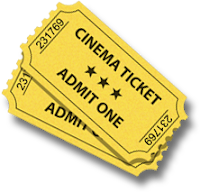rt
Evaluation:
Who did you work with and how did you manage the task between you?
I worked with Ale and Leah and we tried to work out each task equally between us however, Leah and I did quite a bit more than Ale did due to him being on holiday. Me, Leah and Ale was all apart of the film and was involved within the acting side. The task can be divided by filming, acting and editing and me and Leah did it all. I did all of the tasks, with Leah doing three and Ale completing two as well. We didn't manage to distribute the task equally however, the outcome we was pleased with. Ale draw the storyboards and played a part in the acting and filming.I carried out acting, filming, editing and the production diaries More over, Leah also acted and edited as well as filling out the shooting schedule.
How did you plan your sequence? What processes did you use?
We planned our sequence by making some ideas on a piece of paper and piecing our best ideas in an order that would make sense. After piecing our thoughts together, we decided to make a storyboard to make sure that when we filmed it would be in an established order that would make sense to the audience. Processes we used was the making of storyboards, shooting schedules and looking around a variety of horror films to help us receive some inspiration.
What theorists did you think you could apply to your task?
What factors did you have to take into account when planning, shooting and editing?
 There was various amounts of different factors that we had to take into consideration before going ahead with the shooting of our task. The main one being the location of our film which correlates with our planning. During our plan we had to make a list of locations and places of where we wanted to film. As we was restricted to school grounds we had to make sure we shot our scenes during the time that lessons took place so that there was no background noise or unwanted behaviour in the background of our scenes. Another factor that we had to take into consideration was that Ale and Leah couldn't be there for most of the days of editing so after Leah put the footage into order and cropped some clips, I edited the rest of the footage with transitions and music. I also added a voice over within the film so that one bit of the footage didn't have just no sound. It was also to add a variety of skills to the film.
There was various amounts of different factors that we had to take into consideration before going ahead with the shooting of our task. The main one being the location of our film which correlates with our planning. During our plan we had to make a list of locations and places of where we wanted to film. As we was restricted to school grounds we had to make sure we shot our scenes during the time that lessons took place so that there was no background noise or unwanted behaviour in the background of our scenes. Another factor that we had to take into consideration was that Ale and Leah couldn't be there for most of the days of editing so after Leah put the footage into order and cropped some clips, I edited the rest of the footage with transitions and music. I also added a voice over within the film so that one bit of the footage didn't have just no sound. It was also to add a variety of skills to the film.How successful was your sequence? Please identify what worked well and with hindsight what would you improve/do differently?
Our sequence was successful in a way that it makes sense to us and the majority of the audience who have viewed it, and it is a lot compacted into 3 minutes which shows the seriousness and commitment put into the sequence. A main thing that worked well was our understanding of camera skills and the use of the tripod, which also helped our understanding of technology develop. Another thing that worked well was our commitment to re film each scene to make sure the outcome was substantially good. One thing that I would do differently is bring an outfit that I would wear specifically for each scene to ensure that there was no differences within the film that would confuse some of the audience, as in our film in one scene I am wearing one outfit then we used footage from a different day but it was the same scene and I was in different clothes so it didn't look as good as it would have if I was in the same clothes, and I also wasn't in the exact same location which is a minor fault that can be seen a little if you was highly analysing the film. Another thing that I would do differently is think about all of the location more efficiently next time to ensure that there would be no disruptions for the camera or the audio.
What did others say about your productions?
 One thing that was repeatedly said about our production was that it was a clever idea to incorporate the dream because it wasn't extremely confusing to understand what was happening because it was a small time scale so that people didn't have to think too much about what happened in the last scene. With the incorporation of the effects and transitions it was recognisable (also with the acting) that I had gone into a dream and that I was dreaming about something that in the end came true.
One thing that was repeatedly said about our production was that it was a clever idea to incorporate the dream because it wasn't extremely confusing to understand what was happening because it was a small time scale so that people didn't have to think too much about what happened in the last scene. With the incorporation of the effects and transitions it was recognisable (also with the acting) that I had gone into a dream and that I was dreaming about something that in the end came true.What have you learnt from completing this task?
 From carrying out this task, it has enabled me to develop a series of skills and gain more knowledge about the ways of media, filming and editing. Along with this, the task has helped me in different ways but it also helped my in correlation with the feedback of my teacher and others that have watched the film. Another thing that I have learnt from this task, is that next time all tasks within the project should be split evenly to get an equal coverage from each person for the amount of work they each put in, therefore the overall outcome will be shared equally and each person will get their deserved grade as everything was decided fairly. Something else that I have learnt a long this process also is the ways around the editing software, premiere and how to carry out different functions within the software. By taking in new information from this task, it will benefit me in the future when I carry out other editing tasks, my knowledge would be improved and my finals tasks will have progressed.
From carrying out this task, it has enabled me to develop a series of skills and gain more knowledge about the ways of media, filming and editing. Along with this, the task has helped me in different ways but it also helped my in correlation with the feedback of my teacher and others that have watched the film. Another thing that I have learnt from this task, is that next time all tasks within the project should be split evenly to get an equal coverage from each person for the amount of work they each put in, therefore the overall outcome will be shared equally and each person will get their deserved grade as everything was decided fairly. Something else that I have learnt a long this process also is the ways around the editing software, premiere and how to carry out different functions within the software. By taking in new information from this task, it will benefit me in the future when I carry out other editing tasks, my knowledge would be improved and my finals tasks will have progressed. Looking ahead, how will this learning be significant when completing your final film opening?
As a result of me developing new skills and taking in new information it will help me in my final film opening as I will have more understanding of the camera and editing software, which will benefit me quite a lot. As I have learnt about different angles, I will know what type of angles to use in different types of scenes to get the best outcome of the film opening. Also with me having learnt how to edit properly, I know that I will be able to spend an equal amount of time on filming as I could editing because I know that I would be able to complete editing in a certain amount of time given as I understand my ways around editing. In addition, from this task overall I have just learnt about camera and editing, I have learnt how playing a part in a team well can have an efficient amount of outcome on the final task as it will reflect through the efforts of the acting and the time put into the editing.

